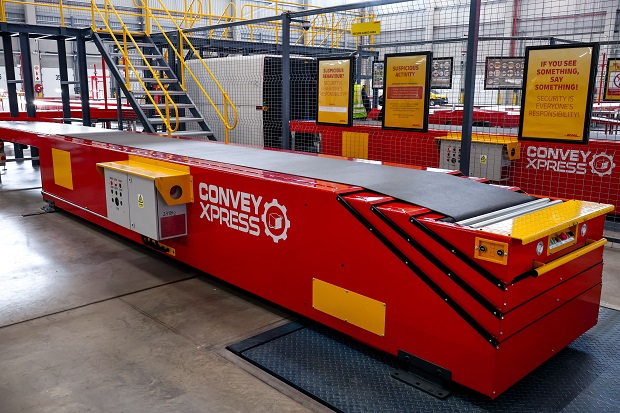3 Ways to Optimise Your Shipping Operations
By Chandru Palaniyandi, Business Analyst, Lucas Systems In today’s hyper-competitive supply chain environment, shipping costs are rising fast—and they’re hitting bottom lines hard. According to a 2024 report by Statista, the global shipping and logistics market has surpassed $11 trillion, with transportation costs making up more than half of total logistics expenses. With freight and [...] The post 3 Ways to Optimise Your Shipping Operations first appeared on Warehouse & Logistics News.

By Chandru Palaniyandi, Business Analyst, Lucas Systems
In today’s hyper-competitive supply chain environment, shipping costs are rising fast—and they’re hitting bottom lines hard. According to a 2024 report by Statista, the global shipping and logistics market has surpassed $11 trillion, with transportation costs making up more than half of total logistics expenses. With freight and parcel carriers enforcing dimensional weight (DIM) pricing and tacking on surcharges for inefficiencies, every inch and ounce now carries a cost.
 The good news? Software-driven optimisation tools can dramatically cut shipping expenses without compromising speed or service levels. Here are three high-impact ways to optimise your shipping operations and achieve measurable savings:
The good news? Software-driven optimisation tools can dramatically cut shipping expenses without compromising speed or service levels. Here are three high-impact ways to optimise your shipping operations and achieve measurable savings:
- Pack Smarter with Cartonisation Engines
One of the most effective tools for reducing shipping spend is cartonisation. A cartonisation engine analyses order contents and determines the most efficient way to pack items into cartons.
By maximising use of available space, you can reduce the number of cartons needed, avoid oversized packaging, and improve overall freight cube utilisation. That means fewer shipments, lower DIM charges, and reduced waste.
Depending on the complexity of your order profiles and shipping zones, cartonisation can cut freight costs by 10% to 25%.
- Eliminate the Cost of “Shipping Air”
Every half-filled box a warehouse sends out is money wasted. When scaled across thousands of weekly shipments, the cost of shipping void space adds up fast.
Modern shipping software can evaluate product dimensions, fragility, and compatibility to eliminate unnecessary voids—while still protecting items. Reducing filler use and minimising empty space leads to better trailer utilisation by as much as 20%, enabling more deliveries per route and lowering your per-package cost.
Overpacking and excessive filler materials not only increase freight spend, but also contribute to environmental waste, something customers are increasingly attuned to.
- Standardise Carton Sizes with Software Support
While it may seem counterintuitive, standardising carton sizes—when paired with smart software—can actually improve efficiency. Warehouse and transportation management systems can analyse order data and SKU profiles to identify the optimal set of box sizes for your operation.
With fewer box types, packing becomes simpler, faster, and easier to train. Pallet stacking and trailer loading become more predictable and uniform, enhancing throughput.
According to the Packaging Machinery Manufacturers Institute (PMMI), using software to standardise and automate box selection can reduce packaging costs by 12% to 18%.
Beyond the operational benefits, standardised cartons make it easier to plan and optimise across the entire fulfillment process. Modern cartonisation engines account for product size, weight, stacking rules, and shipping constraints to identify the best packaging for each order—before picking even begins.
When integrated with your WMS or WES during wave planning, cartonisation decisions enable:
- Optimised pick paths – Knowing carton sizes in advance allows better grouping and order sequencing.
- Improved labour efficiency – Workers pick directly into the right carton, reducing packing time.
- Lower shipping costs – Pre-optimised cartons minimise oversizing and avoid DIM surcharges.
- Tighter trailer loading – Accurate sizing leads to denser, more efficient shipments.
Making It Work: Integrating Cartonisation with Your WMS or WES
With mounting pressure to fulfill faster and cheaper, leading operations are moving carton decisions upstream—into wave planning. This shift, enabled by integrating cartonisation software with Warehouse Management or Execution Systems, unlocks new levels of efficiency.
Traditionally, carton selection happens late—at packing stations—limiting your ability to optimise earlier stages like picking and slotting. By making packaging decisions a part of wave planning, your operation can drive smarter workflows throughout the fulfillment cycle.
This is more than just a technical upgrade, it’s a strategic shift. One Lucas Systems customer, Medusa, implemented cartonisation alongside Lucas’ Dynamic Work Optimisation solution and their WMS. The result: optimised packing and shipping, reduced worker travel time, boosted throughput, and significant cost savings.
As shipping costs continue to rise and customer expectations for fast, efficient, and sustainable fulfillment grow, integrated cartonisation is becoming essential to smart logistics.The post 3 Ways to Optimise Your Shipping Operations first appeared on Warehouse & Logistics News.
















































































































































